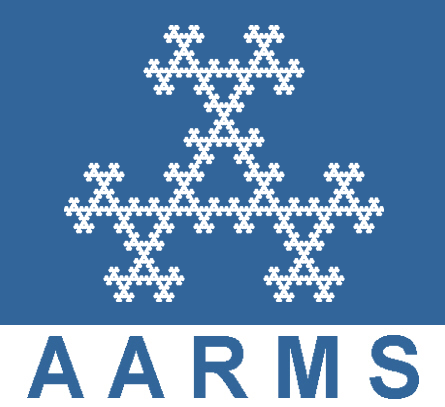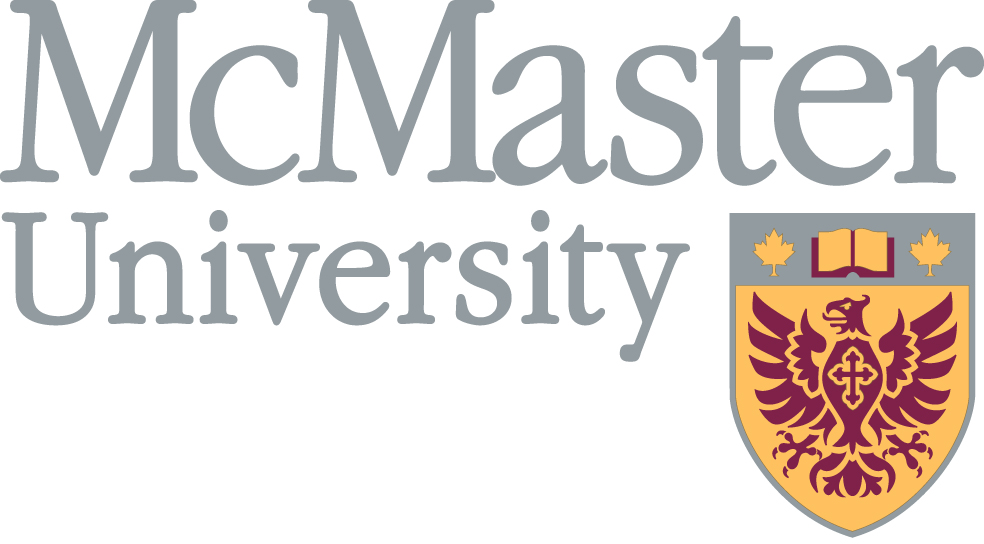2016 CMS Winter Meeting
Niagara Falls, December 2 - 5, 2016
- AMIR AKBARI, University of Lethbridge
Value-distribution of cubic $L$-functions [PDF]
-
Let $k=\mathbb{Q}(\sqrt{-3})$ and let $c\in \mathfrak{O}_k$ be a square free algebraic integer such that $c\equiv 1$ (mod (9)). Let $\zeta_{k(c^{1/3})}(s)$ be the Dedekind zeta function of the cubic field $k(c^{1/3})$ and $\zeta_k(s)$ be the Dedekind zeta function of $k$. For fixed real $s>1/2$ we describe a distribution theorem for the values of the Artin $L$-functions
\begin{equation*}
L_c(s)= \frac{\zeta_{k(c^{1/3})}(s)}{\zeta_k(s)},
\end{equation*}
as $c$ varies. This is joint work with Alia Hamieh.
- SHABNAM AKHTARI, University of Oregon
The difficulty of proving effective results for norm form equations. [PDF]
-
Let $\omega_{1}, \ldots , \omega_{n}$ be algebraic numbers that are linearly independent over the rationals, and let $k = \mathbb{Q}(\omega_{1}, \ldots , \omega_{n})$. We define a homogeneous polynomial in $n$ variables $x_{1}, \ldots, x_{n}$ by
$
N({\bf x}) = \textrm{Norm}_{k/\mathbb{Q}}(x_{1} \omega_{1}+ \ldots + x_{n} \omega_{n}).
$
We are interested in the points $\bf \xi \in \mathbb{Z}^n$ that satisfy $N({\bf x}) = \beta$, for a fixed non-zero $\beta \in \mathbb{Q}$. In a breakthrough work, Wolfgang Schmidt used his celebrated subspace theorem to give some bounds on the number of families of integer solutions to norm form equations. We are interested in finding some effective bounds for the representatives of integral solutions of norm form equations. I will try to explain the difficulty of obtaining such results and will report on some partial progress that we have made in this direction.
This is a joint work in progress with Jeff Vaaler.
- ALEXANDER DAHL, York University
Distribution of class numbers in continued fraction families of real quadratic fields [PDF]
-
Dirichlet's class number formula for real quadratic fields shows that for a fundamental discriminant $d>0$, the class number of $\mathbb{Q}(\sqrt{d})$ denoted by $h(d)$ depends on the ratio of $L(1,\chi_d)$ and the logarithm of the fundamental unit. In order to study the distribution of class numbers, one must therefore control these two values. One strategy is to consider a family of discriminants for which the fundamental unit is explicitly given in terms of $d$, and then study the distribution for $L(1,\chi_d)$ for $d$ in that family. Some examples of such families were studied by Chowla and Yokoi. The fundamental unit in these cases was as small as possible, and it was shown that (eventually) all of the $d$ in these families have $h(d)>1$. In a recent preprint, A. Dahl and Y. Lamzouri take the above approach to studying the distribution of class numbers in Chowla's family, constructing a random model for $L(1,\chi_d)$ for $d$ in the family. In a joint work with V. Kala, we observe that Chowla's and Yokoi's families belong to a larger class of families whose fundamental units are as small as possible and that arise from continued fractions. These families are defined by solutions to the equation $\sqrt{d}=[\lfloor \sqrt{d} \rfloor,\overline{u_1,u_2,\dots,u_{s-1},2\lfloor \sqrt{d} \rfloor}]$ with fixed coefficients $u_1,u_2,\dots,u_{s-1}$.
- DANIEL FIORILLI, University of Ottawa
Major arcs and moments of general arithmetical sequences [PDF]
-
We discuss our work with Régis de la Bretèche on the first two moments of arithmetical sequences in progressions. Instead of using the standard approximation, we generalize Vaughan's major arcs approximation to general sequences, resulting in smaller moments. In the case of the sequence of sums of divisors $\tau_k(n)$, we obtain a variance of the same order of magnitude as the probabilistic variance studied in recent work of Rodgers and Soundararajan.
- TRISTAN FREIBERG, University of Waterloo
Poisson spacings between sums of two squares [PDF]
-
Extending work of Connors--Keating and Smilansky, we formulate an
analog of the Hardy--Littlewood prime $k$-tuple conjecture for
sums of two squares, and show that it implies that the level spacings
in the sequence of sums of two squares are Poisson distributed. We also
give numerical evidence for the conjecture and its implications.
This is joint work with P\"ar Kurlberg and Lior Rosenzweig.
- STEVE GONEK, University of Rochester
The distribution of positive and negative values of Hardy's $Z$-function [PDF]
-
We investigate the distribution of positive and negative values of Hardy's function
$$
Z(t)= \zeta(\tfrac12+it){\chi(\tfrac12+it)}^{-1/2}, $$
where $\chi(s)$ is the factor from the functional equation for the zeta function,
$$
\zeta(s) = \chi(s)\zeta(1-s).
$$
We show that as $T\to\infty$,
$$
\mu (I_{+}(T,T) ) \;\gg T\; \qquad \hbox{and}\qquad \mu(I_{-}(T, T)) \; \gg \; T,
$$
where $\mu(\cdot)$ denotes Lebesgue measure and
\begin{align*}
{ I}_+(T,H) &\;=\; \bigl\{T< t\le T+H\,:\, Z(t)>0\bigr\},\ { I}_-(T,H) &\;=\; \bigl\{T< t\le T+H\,:\, Z(t)<0\bigr\}.
\end{align*}
We also show that if the Riemann hypothesis and pair correlation conjecture are true, then
$$
\mu(I_{+}(0,T) ) \geq .32909\,T \qquad \hbox{and}\qquad \mu(I_{-}(0, T) ) \geq .32909\,T.
$$
This is joint work with A. Ivic.
- EYAL GOREN, McGill University
p-adic dynamics of Hecke operators [PDF]
-
In a joint work with Payman Kassaei, we are studying p-adic analytic dynamics of Hecke operators. While the questions we ask can be posed and studied for the action of Hecke operators on Shimura (or special) sub varieties of any given ambient Shimura variety, the case of modular curves is already a treasure trove and so I’ll focus in my lecture on this case.
- ALIA HAMIEH, University of Lethbridge
Non-Vanishing of Central Values of Rankin-Selberg $L$-Functions [PDF]
-
In this talk, we discuss some results on the non-vanishing of the central values of Rankin-Selberg convolutions of a family of Hilbert modular forms. Such results are obtained by establishing some asymptotics of certain twisted first and second moments. This is an on-going joint work with Naomi Tanabe.
- KEVIN HARE, University of Waterloo
Continued Logarithms [PDF]
-
Let $1 \le \alpha \in \mathbb{R}$. Let $y_0 = \alpha$ and recursively define $a_n = \lfloor \log_2 y_n \rfloor$. If $y_n - 2^{a_n} = 0$, then terminate. Otherwise, set
\[
y_{n+1} = \frac{2^{a_n}}{y_n - 2^{a_n}}
\]
and recurse. This produces the binary (base 2) continued logarithm for $y_0$:
\[
y_0 = 2^{a_0} + \frac{2^{a_0}}{2^{a_1}+ \frac{2^{a_1}}{2^{a_2} + \frac{2^{a_2}}{2^{a_3} + \cdots}}}
\]
These binary continued logarithms were introduced explicitly by Gosper in his appendix on Continued Fraction Arithmetic. These were further studied by Borwein et. al. extending classical continued fraction recurrences for binary continued logs and investigating the distribution of aperiodic binary continued logarithm terms for quadratic irrationalities -- such as can not occur for simple continued fractions.
In this talk we will talk about recent work generalizing many of these results to higher bases.
- MATILDE LALIN, Université de Montréal
A polynomial sieve in a geometric setting [PDF]
-
We consider an application of a polynomial sieve to counting points of bounded height on a cyclic cover of $\mathbb{P}^n$ over the rational function field.
This is joint work with A. Bucur, A. C. Cojocaru and L. B. Pierce.
- STEVE LESTER, University of Montreal
Quantum Unique Egodicity for half integral weight autmorophic forms [PDF]
-
Given a smooth compact Riemannian manifold $(M, g)$ with no boundary an important problem in Quantum Chaos studies the distribution of $L^2$ mass of eigenfunctions of the Laplace-Beltrami operator in the limit as the eigenvalue tends to infinity. For M with negative curvature Rudnick and Sarnak have conjectured that the $L^2$ mass of all eigenfunctions equidistributes with respect to the Riemannian volume form; this is known as the Quantum Unique Ergodicity (QUE) Conjecture. In certain arithmetic settings QUE is now known. In this talk I will discuss the analogue of QUE in the context of half-integral weight automorphic forms. This is based on joint work Maksym Radziwill.
- YU-RU LIU, University of Waterloo
The shifted Tur\'an sieve method on tournaments [PDF]
-
We construct a shifted version of the Tur\'an sieve method and apply it to some counting problems on tournaments. More precisely, we obtain upper bounds for the number of tournaments which contain a fixed number of $r$-cycles. We also consider an analogous question on $t$-partite tournaments. These results are the first which deal with cycles on ``all tournaments''. This is a joint work with Wentang Kuo, S\'avio Ribas and Kevin Zhou.
- ALLYSA LUMLEY, York University
A Zero Density Result for the Riemann Zeta Function [PDF]
-
Let $N(\sigma,T)$ denote the number of nontrivial zeros of the Riemann zeta function with real part greater than $\sigma$ and imaginary part between $0$ and $T$. We provide explicit upper bounds for $N(\sigma,T)$ commonly referred to as a zero density result. In 1940, Ingham showed the following asymptotic result
\[N(\sigma,T)=O(T^{\frac{3(1-\sigma)}{2-\sigma}}\log^5T).\]
Ramaré recently proved an explicit version of this estimate:
\[N(\sigma,T)\le 4.9(3T)^{\frac83(1-\sigma)}\log^{5-2\sigma}(T)+51.5\log^2T,\]
for $\sigma\ge 0.52$ and $T\ge 3.061\cdot10^{10}$. \We discuss a generalization of the method used in these two results which yields an explicit bound of a similar shape while also improving the constants. Furthermore, we present the effect of these improvements on explicit estimates for the prime counting function $\psi(x)$. This is joint work with Habiba Kadiri and Nathan Ng.
- SASHA MANGEREL, University of Toronto
On the Bivariate Erd\H{o}s-Kac Theorem and Correlations of the Mobius Function [PDF]
-
Let $\omega$ denote the arithmetic function that counts the number of distinct prime factors of an integer, and let $d \geq 1$. We develop a bivariate probabilistic model to study the joint distribution of the deterministic vectors $(\omega(n),\omega(n+d))$ with $n \leq x$ as $x \rightarrow \infty$, where $n$ and $n+d$ are both required to be squarefree. The following three results are applications: \newline
i) We establish a quantitative version of the bivariate Erd\H{o}s-Kac theorem, a result first proven in a non-quantitative way by W. LeVeque, on a proper subset of $\mathbb{N}$. \newline
ii) We give two partial results in the direction of a conjecture of Chowla on binary correlations of the M\"{o}bius function. Let $\mu_z(n) := \mu^2(n) (-1)^{\omega(n;z)}$, where $\omega(n;z)$ is the number of distinct primes $p|n$ with $p \leq z$. Then as long as $\frac{\log x}{\log z} \rightarrow \infty$ as $x \rightarrow \infty$, $\sum_{n \leq x} \mu_z(n)\mu_z(n+1) = o(x)$. \newline
In a related way, we show that if $\mu(n;u) := \mu^2(n)e^{iu\omega(n)}$ then provided that $u = o(1)$ and $u\sqrt{\log_2 x} \rightarrow \infty$ as $x \rightarrow \infty$ then $\sum_{n \leq x} \mu(n;u)\mu(n+1;u) = o(x).$ \newline
iii) We finally prove a partial result in the direction of a conjecture of Erd\H{o}s, Pomerance and Sark\H{o}zy on the order of magnitude of the number of $n \leq x$ such that $\tau(n) = \tau(n+1)$.
- CAM STEWART, University of Waterloo
Multiplicatively dependent vectors of algebraic numbers [PDF]
-
This is joint work with Francesco Pappalardi, Min Sha and Igor Shparlinski. Let n be a positive integer and let $(a_1,a_2,...,a_n)$ be a vector of algebraic numbers from K where K is a finite extension of the rationals.We shall discuss estimates for the number of such vectors whose entries have height at most H and are multiplicatively dependent.
- ASIF ZAMAN, University of Toronto
Brun-Titchmarsh analogue for the Chebotarev density theorem [PDF]
-
The classical Brun-Titchmarsh theorem provides an upper bound for the number of primes in an arithmetic progression in a far wider range than that afforded by the Prime Number Theorem for arithmetic progressions. The Chebotarev density theorem, on the other hand, has few alternatives to adequately estimate the number of prime ideals with a prescribed splitting behaviour in a Galois extension of number fields. Unfortunately, these alternatives are not sufficiently robust for many interesting applications. We will discuss the existing literature and report on a new field-uniform generalization of Brun-Titchmarsh associated to the Chebotarev density theorem. This result has consequences for counting primes represented by certain binary quadratic forms and refining unconditional bounds towards the Lang-Trotter conjectures for elliptic curves. This talk is based on joint work with Jesse Thorner.





